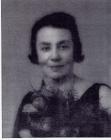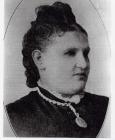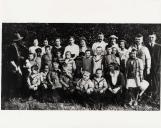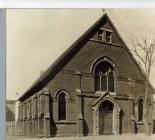2
The first organized Jewish women's group in Saint John was the Daughters of Israel, which was founded in January 1899 by Alice Hart to "help the needy and nourish the sick". The women of the Daughters of Israel were committed to providing assistance to immigrant families as well as regularly visiting the sick. Barred from political and economic involvement in Victorian society, middle and upper class women had begun to take an active role in philanthropic work - most of the early benevolent societies were founded by women. By 1900, much of the immigrant aid work in Canada was being performed by women. The Daughters of Israel were one of the first of a growing number of ladies-aid societies across Canada, Jewish and non-Jewish, which raised funds for relief work, immigration assistance, etc.3
The Ahavith Achim Synagogue included classrooms and the Mikvah (ritual bath).1940
Carleton Street, Saint John, New Brunswick, Canada
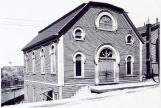
4
The first meeting of the new organization was held on January 17, 1899 in the Sunday School rooms of the Ahavith Achim Synagogue,6
There was a 25 cent initiation fee and dues were 10 cents per month. Alice Hart was the first president. Mrs. D. Komiensky was vice-president. The daughters of Alice Hart followed her as president : Rebecca Hart Landau Wyzanski, Carrie (Mrs. Abraham) Isaacs and Elizabeth (Mrs. Louis) Green.7
Immigrants arriving in Saint John, New Brunswick on board the Lake Superior, 19021902
Saint John, New Brunswick, Canada
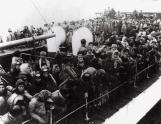
8
A significant portion of the work of the Daughters of Israel involved providing aid to the large number of Jewish immigrants from Eastern Europe who were beginning to arrive at the Port of Saint John by the late 1890s. The flow of Eastern Europeans became a flood by 1905 as increasing persecution, both by the state and non-Jewish population of Poland, Russia, Lithuania and elsewhere, combined with famine and outbreaks of disease to drive Jews to use what assets they possessed to book passage to English or Western European ports and then across the Atlantic in crowded steerage berths to North America. Saint John, as a winter port of entry into Canada, received a large number of these immigrants. The small percentage of them who stayed in Saint John swelled the numbers of the Jewish community many times over before the end of large-scale immigration to Canada during the First World War. The Jewish immigration Society of Saint John charged the women of the Daughters of Israel with caring for the needs, especially the need for clothing, of "distressed women and children arriving by steamer".9
Certificate of Naturalization for Lena Cohen, November 25, 1941 issued by the Canadian Government25 November 1941
Saint John, New Brunswick
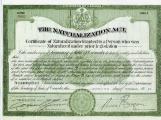
10
Receipt issued by the Salvation Army for Hebrew Immigrant Aid work, June 9, 19089 June 1908
Saint John, New Brunswick

13
As the number of immigrants grew in the Jewish community, the English Jews were increasingly alienated by the poor Yiddish-speaking Jews. The end result of this division was the formation of the separate Hazen Avenue Synagogue in 1906-1907 to accommodate the more established community members. Despite the community's apparent separation, the Daughters of Israel, led by the affluent uptown ladies, continued to accept women from the North End as members.14
Ida (Mrs. Harry) Jacobson was president of the North End Ladies Society in Saint John in 1930.1920
Saint John, New Brunswick
